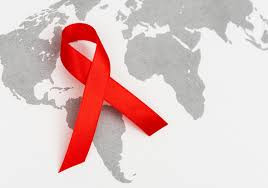
ZVISHAVANE district has emerged as the new HIV hotspot in Midlands, recording the highest number of new infections and people living with the chronic disease.
The information was released during a recent National Aids Council (Nac) media sensitisation workshop held in Redcliff.
Previously, Shurugwi was the province's HIV hotspot.
According to Nac, Zvishavane's HIV prevalence rate stands at 16,37% with Shurugwi, Mberengwa and Chirumanzu ranked second, third and fourth at 14,64%, 13,4% and 12,88% respectively.
Gweru's HIV prevalence rate stands at 11,31%, Kwekwe (10,99%) while Gokwe South and Gokwe North are ranked at 9,19% and 5,81%, respectively.
On HIV incidence by district, Zvishavane is on top at 0,31% with Shurugwi and Mberengwa coming second and third at 0,28% and 0,26%, respectively.
The statistics show that the HIV incidence rate in Chirumanzu is at 0,23%, Gweru (0,21%), Kwekwe (0,20%), Gokwe South (0,17%) and Gokwe North (0,12%).
Midlands Nac provincial manager, Mambeu Shumba, explained why Zvishavane emerged as the HIV hotspot.
- Zim wins bid to host ICASA 2023
- An extraordinary tale of perseverance
- Poverty drives Epworth women into sex work
- NAC urged to tame new HIV infections
Keep Reading
"The area serves as a corridor for people travelling to South Africa and Botswana, many of whom are drawn to Zvishavane and Shurugwi due to mineral resources," he said.
Shumba said mining activities attracted drivers, sex workers and informal traders, among other individuals who engaged in unprotected sex, contributing to increased infection.
Midlands province HIV focal person in the Health and Child Care ministry Brian Musayerenge, however, said from 2022 to 2023, new HIV infections in the province declined for both adults and children.
“The number of new HIV infections among adults declined by 4%, among children by 11% from 2022 to 2023,"he said.
"The number of new HIV infections among the 10-19 years age group declined by 1,5% while among the 15-24 years age group it decreased by 2% from 2022 to 2023."
Musayerenge said in 2024, the province recorded an increase in HIV testing with 242 114 people tested against a target of 199 611.
He said of those tested 8 301 were positive while 8 177 were verified and 7 743 were initiated on antiretroviral therapy.
HIV prevalence refers to the total number of people living with HIV at a given time while HIV incidence points to new infections within a specific period.
Health experts say understanding HIV prevalence and incidence helps in the assessment of the overall impact of the pandemic, tracking effectiveness of preventive efforts and appropriate resource allocation.









